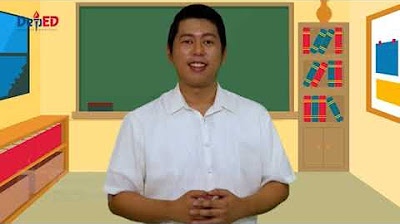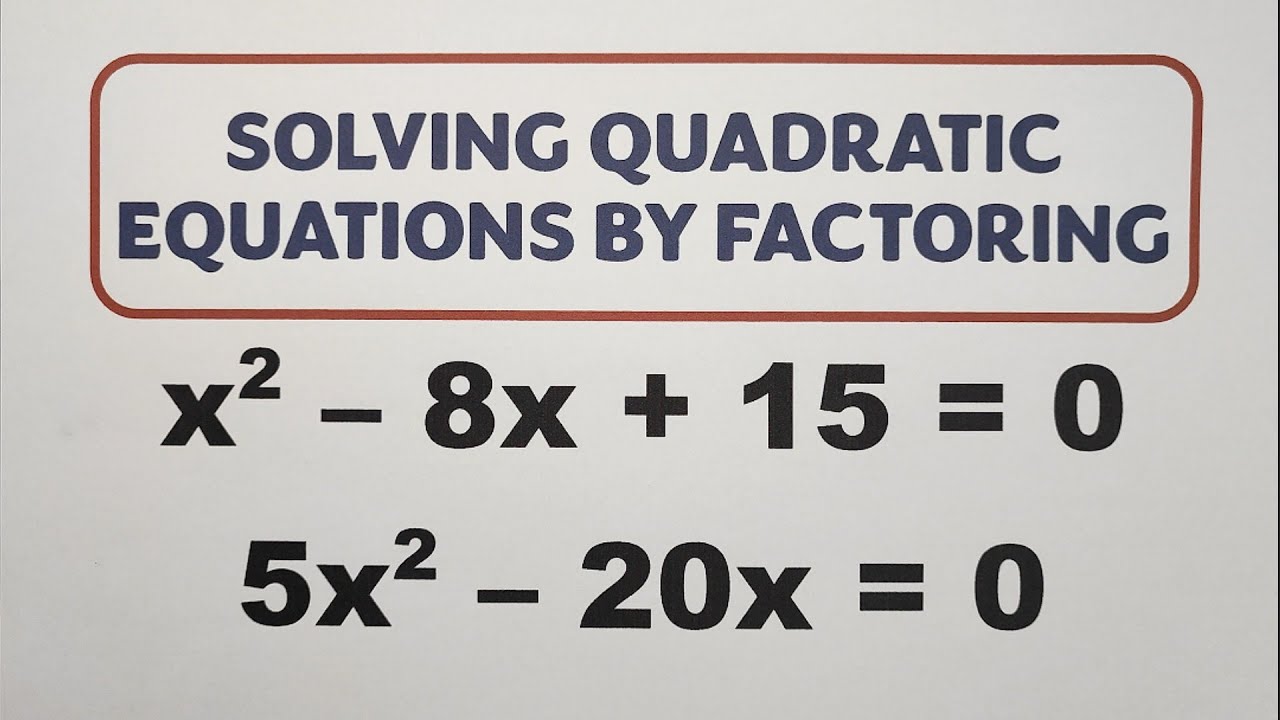Factoring Part 1 - Common Monomial Factoring | Grade 8 Q1 @MathTeacherGon
Summary
TLDRIn this educational video, the teacher introduces common monomial factoring, a method to break down polynomials into factors. The process involves finding the greatest common factor (GCF) of the terms in a polynomial and then dividing each term by the GCF to obtain the factors. Two examples are provided: factoring 8x^2 + 12x by finding the GCF of 4x and 12x, resulting in 4x(2x+3). The second example involves factoring a more complex polynomial, 14a^3b^2 - 8a^2b + 6a, leading to 2a(7a^2b^2 - 4ab + 3). The video concludes with a reminder to subscribe for more educational content.
Takeaways
- 📚 The video is focused on teaching common monomial factoring.
- 🔄 Factoring is described as the reverse process of multiplying polynomials.
- 📐 The process involves breaking down polynomials into factors.
- 📝 Two examples are provided to illustrate the factoring process.
- 🔢 The first example involves factoring the expression 8x^2 + 12x.
- 🔑 Finding the greatest common factor (GCF) is crucial in factoring.
- 🧮 Prime factorization is used to determine the GCF.
- 📉 The GCF for the first example is calculated to be 4x.
- ✅ Verification of the factored expression is done by multiplying the factors.
- 📑 The second example is more complex, involving the expression 14a^3b^2 - 8a^2b + 6a.
- 🔍 The GCF for the second example is found to be 2a.
- 📝 The final factored form of the second example is 2a(7a^2b^2 - 4ab + 3).
Q & A
What is the main topic discussed in the video?
-The main topic discussed in the video is common monomial factoring, which is the process of breaking down a polynomial into factors by identifying the greatest common factor of its terms.
What is the reverse process of factoring?
-The reverse process of factoring is multiplying polynomials, where you combine factors to form a polynomial.
What are the two examples used in the video to demonstrate common monomial factoring?
-The two examples used are 8x^2 + 12x and 14a^3b^2 - 8a^2b + 6a.
How does one find the prime factors of 8?
-The prime factors of 8 are found by dividing 8 by 2, which gives 4, and then dividing 4 by 2, which gives 2. So, the prime factors are 2, 2, and 2.
What is the greatest common factor (GCF) of 8x^2 and 12x?
-The GCF of 8x^2 and 12x is 4x, as 4 is the highest number that divides both 8 and 12, and x is the common variable factor.
How is the GCF used to factor the expression 8x^2 + 12x?
-The GCF 4x is factored out of 8x^2 + 12x, and the remaining terms are placed inside parentheses, resulting in 4x(2x + 3).
What is the GCF of the terms 14a^3b^2, 8a^2b, and 6a?
-The GCF of the terms 14a^3b^2, 8a^2b, and 6a is 2a, as 2 and a are the common factors in all terms.
How does the video verify the correctness of the factored form?
-The video verifies the correctness of the factored form by using the distributive property to multiply the factors back together and checking if it results in the original polynomial.
What is the final factored form of the second example, 14a^3b^2 - 8a^2b + 6a?
-The final factored form of the second example is 2a(7a^2b^2 - 4ab + 3).
What is the significance of the greatest common factor in factoring polynomials?
-The greatest common factor is significant in factoring polynomials because it simplifies the expression by identifying the common factors that can be factored out, making the polynomial easier to work with.
Outlines

هذا القسم متوفر فقط للمشتركين. يرجى الترقية للوصول إلى هذه الميزة.
قم بالترقية الآنMindmap

هذا القسم متوفر فقط للمشتركين. يرجى الترقية للوصول إلى هذه الميزة.
قم بالترقية الآنKeywords

هذا القسم متوفر فقط للمشتركين. يرجى الترقية للوصول إلى هذه الميزة.
قم بالترقية الآنHighlights

هذا القسم متوفر فقط للمشتركين. يرجى الترقية للوصول إلى هذه الميزة.
قم بالترقية الآنTranscripts

هذا القسم متوفر فقط للمشتركين. يرجى الترقية للوصول إلى هذه الميزة.
قم بالترقية الآنتصفح المزيد من مقاطع الفيديو ذات الصلة

Grade 8 Math Q1 Ep1: Factoring Polynomials

Solving Quadratic Equations by Factoring @MathTeacherGon - Grade 9 Math

Factoring Greatest Common Monomial Factor

Factoring Polynomials using Greatest Common Monomial Factor

Common Monomial Factoring - Polynomial Factoring - Grade 8 Math

Introduction to factoring higher degree polynomials | Algebra 2 | Khan Academy
5.0 / 5 (0 votes)
